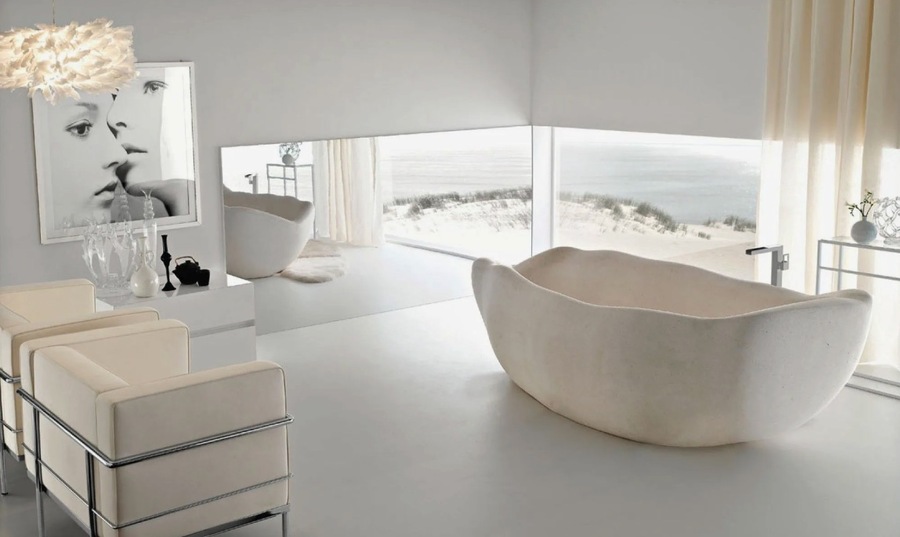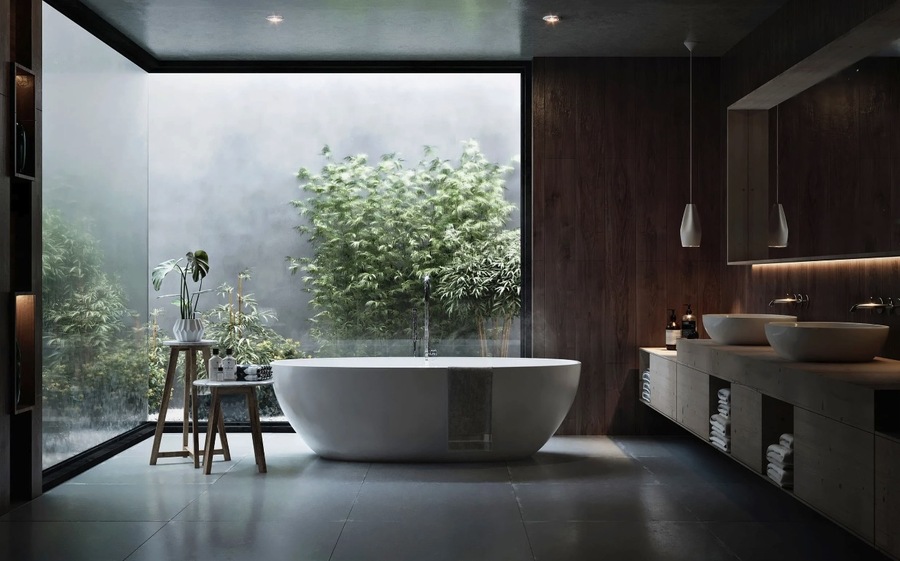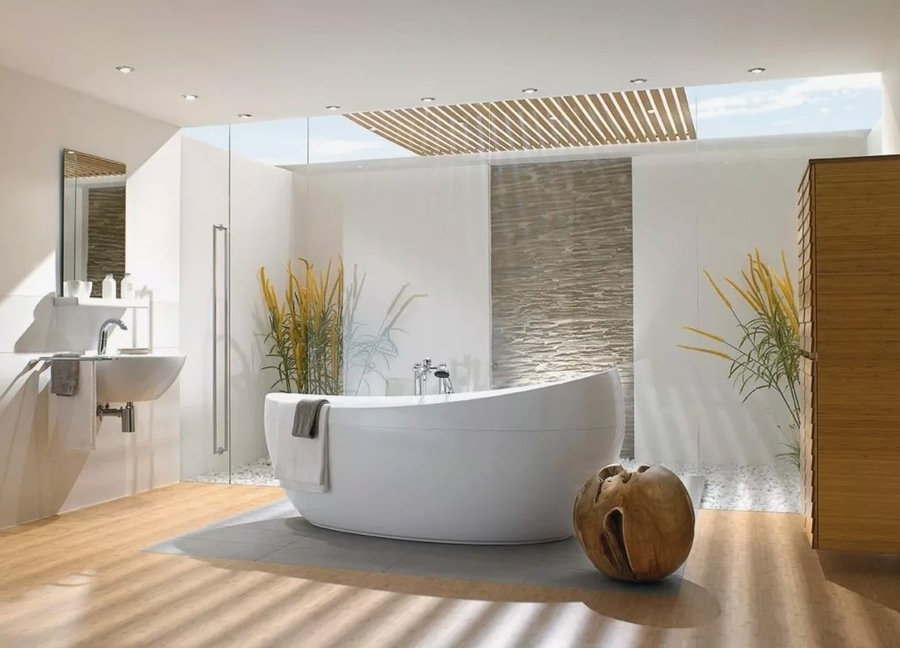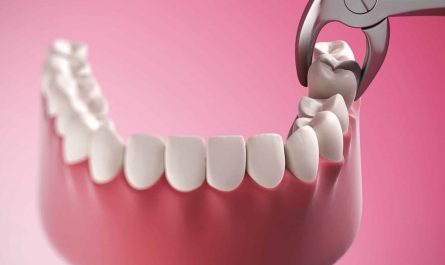The bathtub, a staple in contemporary bathrooms, has a rich history dating back nearly 5,000 years. This essential fixture has evolved significantly in terms of materials, design, and cultural significance. From ancient civilizations to modern times, the bathtub has transformed from a luxurious rarity to a common household feature, offering both hygiene and relaxation. For those considering a bathroom renovation, particularly in places like Dubai, professional services such as Vigilant Design & Renovation can help turn your vision into reality, ensuring your bathroom is both functional and aesthetically pleasing.
Historical Development of the Bathtub
Ancient Civilizations
Egypt, Greece, and Rome: Archaeological evidence shows that bathtubs were used for hygienic and therapeutic purposes in these ancient civilizations. In Egypt, for example, bathtubs were often made of stone and placed in the palatial homes of the elite. Greek and Roman baths were more communal, featuring intricate plumbing systems that provided fresh water and drainage. Roman bathhouses, or thermae, were sophisticated facilities with separate rooms for hot and cold baths, steam rooms, and even exercise areas. These public baths were social hubs where people gathered not just for cleanliness, but also for relaxation and socializing.
Middle Ages
During this period, bathing fell out of favor in Europe due to the belief that it was sinful and an unnecessary luxury. The Catholic Church’s influence led to the perception that frequent bathing could incite sinful thoughts. Consequently, bathtubs became rare, and those that existed were often wooden and portable. The wealthy rented tubs, which were transported from house to house, filled with water heated over a fire. This process was cumbersome, making bathing an occasional and special event rather than a regular practice.
17th Century
The resurgence of bathing came as medical knowledge advanced, proving the health benefits of regular bathing. French inventor Leveille introduced the first metal bathtubs, which were easier to clean and more durable than wooden tubs. He also developed equipment to heat bathwater, making bathing more convenient. This period marked the beginning of a cultural shift where bathing started to be seen as essential for health and well-being, laying the groundwork for the widespread acceptance of bathtubs in private homes.
19th Century
England: During Queen Victoria’s reign, the popularity of seated metal baths grew. These baths were made of materials such as copper and tin, which were more affordable and durable. The development of indoor plumbing systems in the mid-19th century revolutionized home bathing, making it more accessible to the middle class. The introduction of hot and cold running water further enhanced the convenience and appeal of bathtubs.
Russia: The earliest bathtubs were wooden, introduced in the 16th century. Due to wood shortages, steel bathtubs became more common, and cast iron bathtubs were introduced during the reign of Peter the Great. However, it wasn’t until several centuries later that bathtubs became widely accessible. Russian bathhouses, or banyas, also played a significant role in the cultural acceptance of bathing, combining steam baths with cold plunges for a therapeutic experience.
20th Century
The introduction of polymers revolutionized bathtub manufacturing. Materials like acrylic and fiberglass became popular, offering versatility in design and greater affordability. These materials allowed for the production of bathtubs in various shapes and sizes, making them more accessible to a broader audience. The mid-20th century also saw the rise of the spa and wellness movement, further increasing the popularity of bathtubs as a means of relaxation and self-care.
Materials Used in Modern Bathtubs
Modern bathtubs are made from a variety of materials, each offering unique benefits:
Acrylic
Lightweight, durable, and easy to mold into various shapes and sizes. Acrylic bathtubs are resistant to chipping and cracking, making them a popular choice for contemporary bathrooms. They are also easy to clean and maintain, with a smooth, non-porous surface that resists mold and mildew. Acrylic’s thermal properties keep the water warmer for longer periods, enhancing the bathing experience.
Fiberglass
Similar to acrylic in many ways, fiberglass bathtubs are reinforced with a plastic layer, making them lightweight and inexpensive. They are easy to install but may not be as durable as other materials. Fiberglass is also prone to surface wear and can become dull over time. However, its affordability makes it an attractive option for budget-conscious homeowners.
Cast Iron
Known for their durability and heat retention, cast iron bathtubs are coated with enamel. They are heavy and require a strong floor for installation but are prized for their classic look and long lifespan. The enamel coating provides a smooth, glossy finish that is resistant to scratches and stains. Cast iron bathtubs are often found in traditional or vintage-style bathrooms, adding a touch of elegance and timeless beauty.
Steel
Enamel-coated steel bathtubs are durable and offer a sleek, modern appearance. They are less heavy than cast iron but still provide good heat retention. Steel bathtubs are known for their affordability and strength, making them a practical choice for many homeowners. The enamel surface is easy to clean and maintain, though it can chip if subjected to heavy impact.
Stone Resin
A blend of natural stone and resin, these bathtubs are durable, have excellent heat retention, and can be molded into various shapes. They offer a luxurious feel and appearance, combining the natural beauty of stone with the versatility of resin. Stone resin bathtubs are also non-porous, making them resistant to mold and bacteria. Their weight and solidity provide a sense of permanence and luxury.
Copper
A premium material known for its antimicrobial properties and unique aesthetic. Copper bathtubs develop a natural patina over time, adding to their character. The patina can range from rich browns to verdigris, giving each bathtub a unique and evolving appearance. Copper’s excellent heat conductivity ensures a warm and comfortable bathing experience. These bathtubs are often handcrafted, making them a statement piece in any bathroom.
Marble and Other Natural Stones
These materials offer unmatched luxury and elegance. Natural stone bathtubs are incredibly durable but require regular maintenance to preserve their appearance. Marble, granite, and travertine are popular choices, each with distinct veining and color variations. These bathtubs are often custom-made, providing a unique and personalized bathing experience. The natural beauty of stone adds a sense of grandeur and sophistication to any bathroom.

Modern Bathroom Styles
The design of a modern bathroom can greatly influence the overall ambiance and functionality. Here are some popular styles:
Scandinavian Style
Emphasizes simplicity, minimalism, and functionality. The palette is soft and neutral, often featuring white and gray tones with accents of brown, green, or blue. Natural materials like wood and stone are prevalent. Scandinavian bathrooms often include sleek, modern fixtures and fittings, as well as ample natural light. The design focuses on creating a calm and serene environment, with an emphasis on clean lines and uncluttered spaces.
Modern Style
Characterized by a neutral color palette, including shades of white, cream, and gray, complemented by bright accents. Black and white schemes are also common. The design focuses on clean lines and minimalistic elements. Modern bathrooms often feature innovative technologies, such as smart mirrors and touchless faucets, enhancing convenience and efficiency. The use of high-quality materials and finishes creates a polished and sophisticated look.
Classic Style
Based on traditional aesthetics and sophistication, this style uses muted, neutral colors with occasional brighter hues in accessories or tiles to create contrast. Classic bathrooms often include elegant fixtures, such as clawfoot tubs and pedestal sinks, as well as decorative moldings and intricate tile patterns. The design aims to create a timeless and refined space, with an emphasis on quality craftsmanship and attention to detail.
Loft Style
Features high ceilings and an open floor plan. The look is created with unplastered brick walls, concrete floors and countertops, and exposed plumbing pipes. Loft-style bathrooms often incorporate industrial elements, such as metal fixtures and reclaimed wood accents. The design emphasizes a raw, unfinished aesthetic, with a focus on functionality and simplicity. Large windows and open spaces enhance the sense of airiness and light.
Provence Style
Known for its rustic elegance, this style employs a warm color palette with shades of lavender, yellow, olive green, blue, cream, and white. Provence bathrooms often feature vintage fixtures, distressed wood furniture, and decorative tiles. The design aims to create a cozy and inviting atmosphere, with a focus on natural materials and artisanal craftsmanship. Floral patterns and soft textiles add to the charm and warmth of the space.
Ecostyle
Focuses on closeness to nature, using natural materials and colors to create a harmonious and tranquil environment. Ecostyle bathrooms often incorporate sustainable and eco-friendly elements, such as bamboo flooring, recycled glass tiles, and energy-efficient fixtures. The design emphasizes simplicity and balance, with a focus on creating a healthy and sustainable space. Plants and natural light play a significant role in enhancing the connection to nature.
Victorian Style
Defined by elegance, richness, and attention to detail. This style often incorporates intricate patterns, rich colors, and luxurious materials. Victorian bathrooms feature ornate fixtures, such as freestanding tubs with elaborate clawfoot designs, as well as decorative moldings and wallpaper. The design aims to create a sense of grandeur and opulence, with a focus on historical authenticity and craftsmanship. The use of antique or vintage-inspired elements adds to the overall charm and character.
Turkish Style
Inspired by Turkey’s rich history, this style reflects Roman, Byzantine, and Ottoman influences, featuring ornate details and vibrant colors. Turkish bathrooms often include intricate mosaic tiles, decorative arches, and luxurious marble elements. The design aims to create a lavish and exotic atmosphere, with a focus on craftsmanship and attention to detail. Warm lighting and plush textiles, such as Turkish towels and rugs, enhance the overall comfort and ambiance.
Conclusion
When designing a bathroom, the choice of style can transform the space into a personal retreat, providing a sanctuary for relaxation and rejuvenation. Each style offers unique characteristics and benefits, allowing homeowners to create a space that suits their lifestyle and preferences. Whether opting for the simplicity of Scandinavian design, the elegance of Victorian style, or the exotic allure of Turkish aesthetics, a well-designed bathroom can significantly enhance the overall quality of life.
For those considering a bathroom renovation, particularly in places like Dubai, professional services such as Vigilant Design & Renovation can help turn your vision into reality, ensuring your bathroom is both functional and aesthetically pleasing. With their expertise and attention to detail, these professionals can create a bathroom that is not only a practical space for daily hygiene but also a luxurious retreat for relaxation and self-care.

Football fan, hustler, record lover, Swiss design-head and brand builder. Making at the sweet spot between aesthetics and mathematics to give life to your brand. I’m fueled by craft beer, hip-hop and tortilla chips




